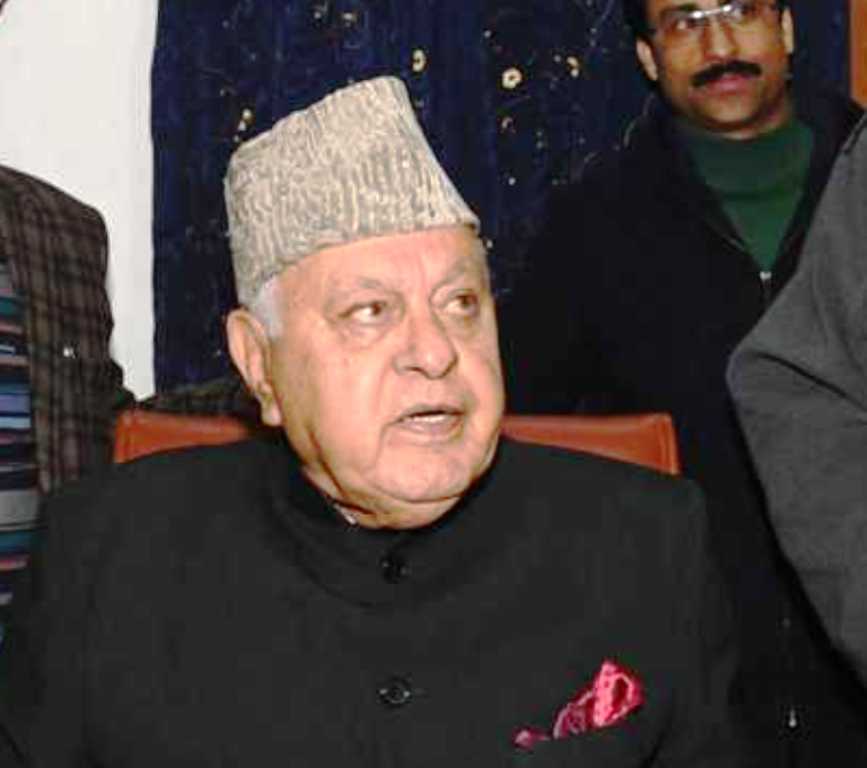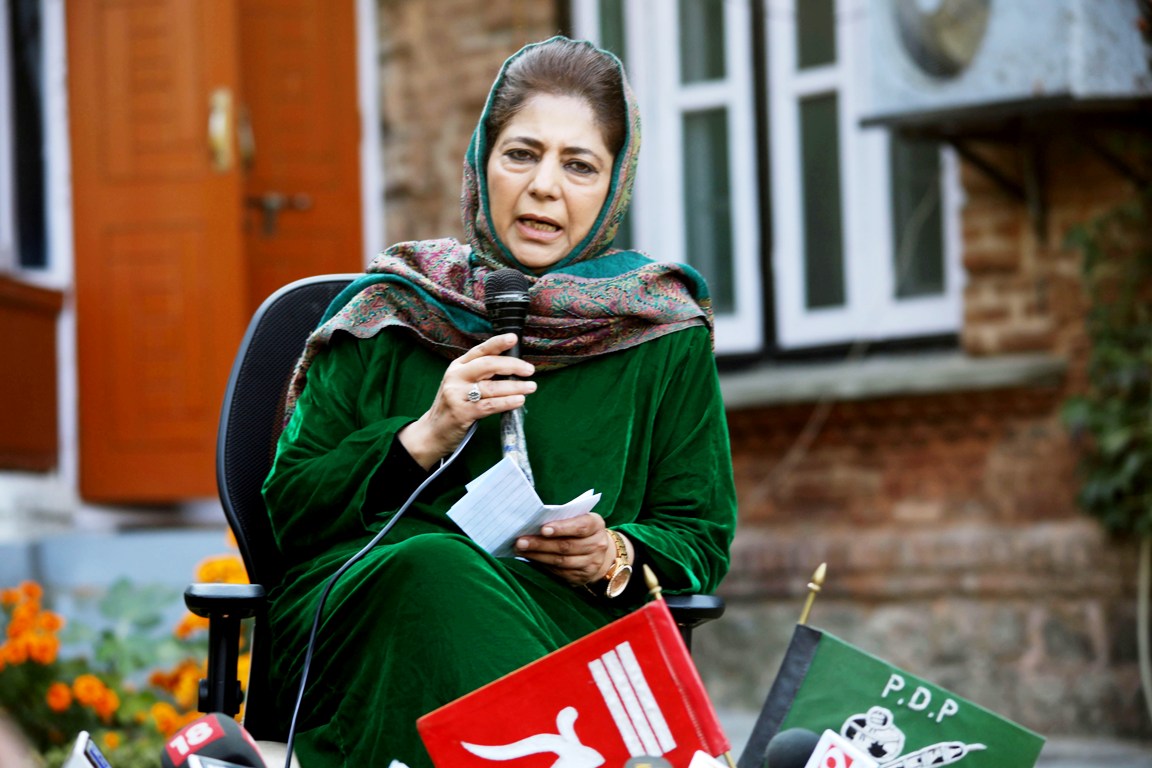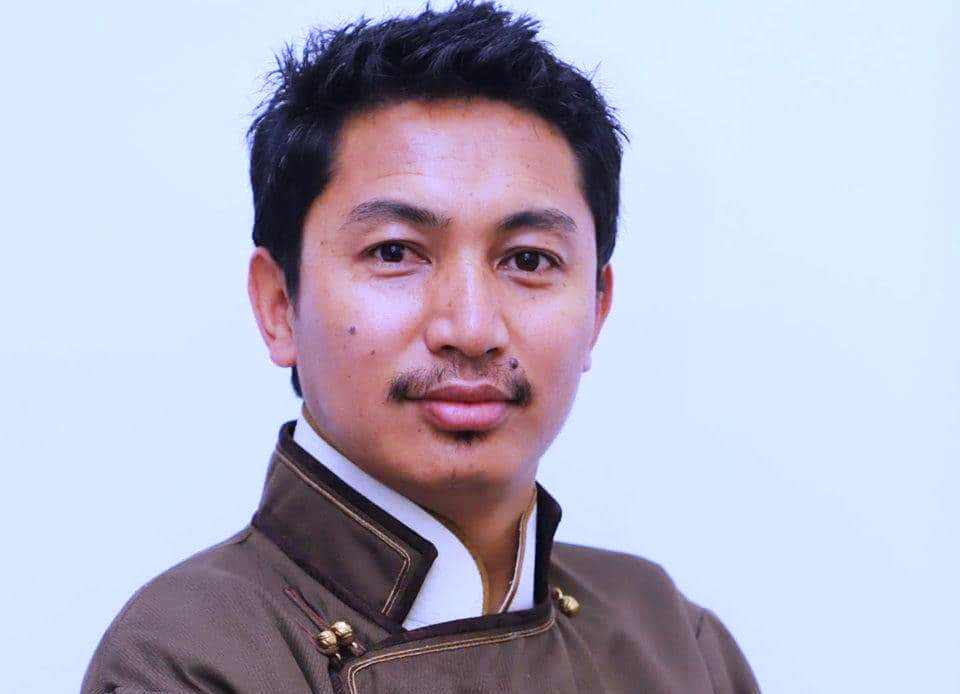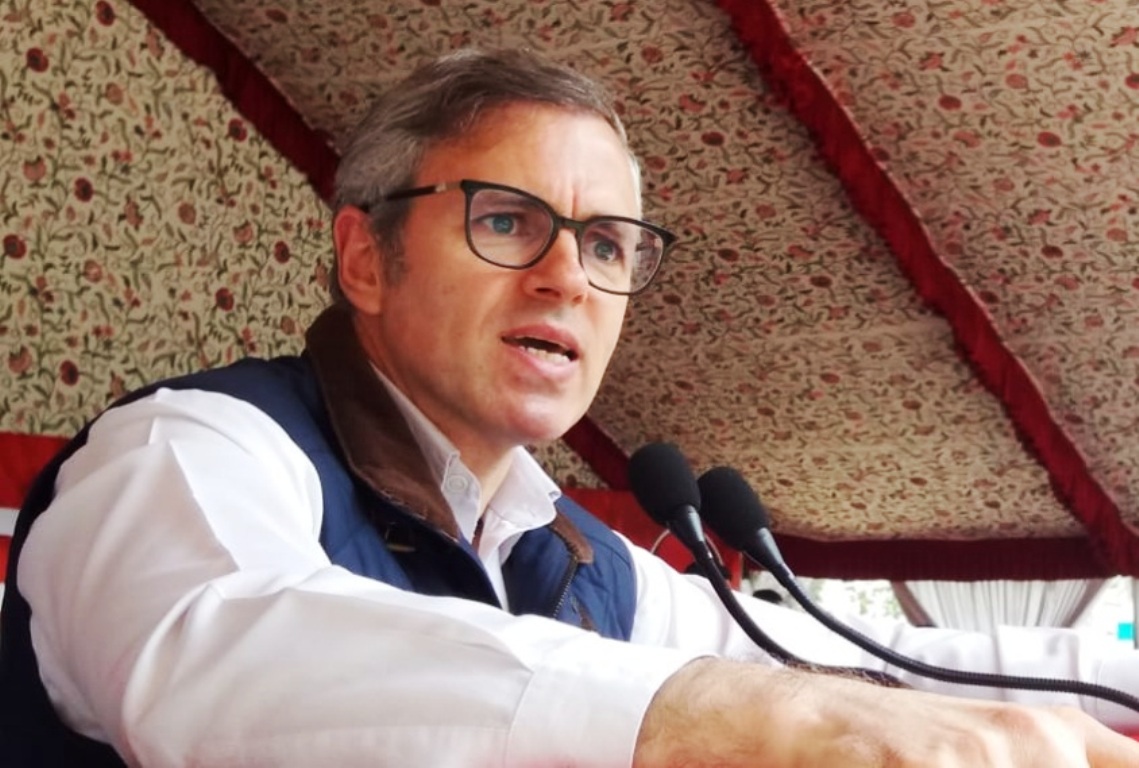by Sheikh Mustafa
LACHIPORA (URI): Following the Coronavirus Pandemic the world is hugely relying on the internet for trade to education. In Kashmir that barely moved from communication blockade to sluggish 2G, students are suffering the most. Owing to difficult terrain, areas are facing a crippling crisis because of the accessibility.

Here in Lachipora belt of Uri, students tread at least two kilometres through dangerous mountainous routes in order to get better 2G connectivity to join their online classes. Situated at a distance of 120 Kilometres north of Srinagar in the bosom of mountains and huge lush green trees, Lachipora is a village in Boniyar block in Baramulla district.
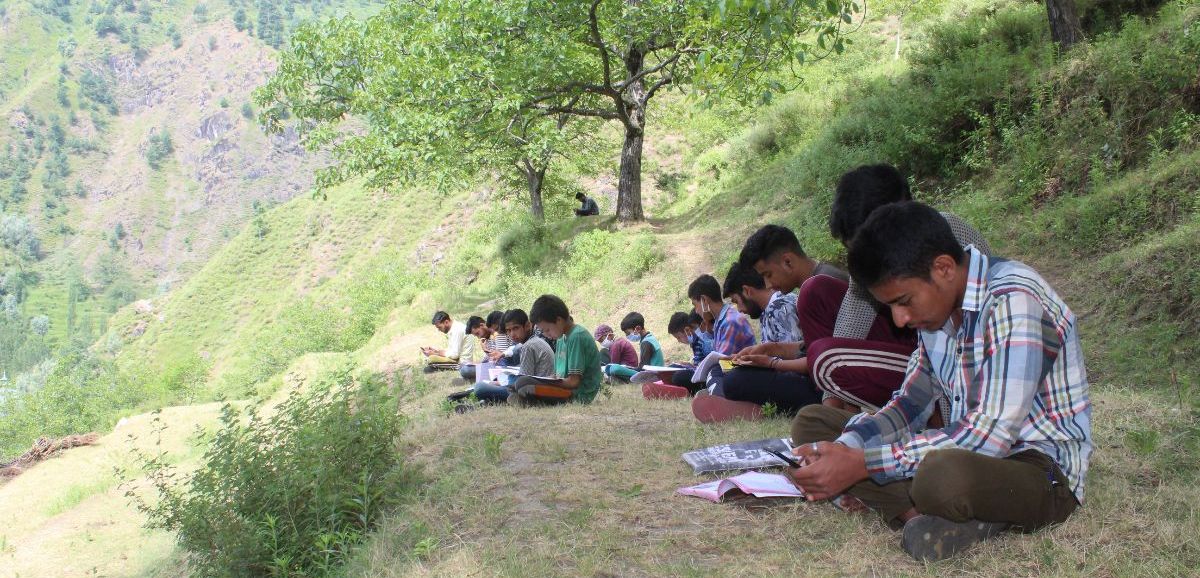
It is a peculiar open-air school where the airwaves teach the students. The speciality of this ‘school’ located over the difficult Dub heights is that the there is no teacher and one can find a PhD scholar or a fifth primary boy or girl – all in the same class. Part of the Dachawar hamlet, the Dub is actually part of the Lachipora Wildlife Sanctuary that is famous for Kashmiri Markhor and the leopard. It is located between Dachawar and Jala.
This kind of online self-study is interesting because the “class” is located in a wildlife sanctuary and is part of the 5 km belt straddling the Line of Control. It is a grand mix of nature and modernity.

Students living on the small valleys often find it difficult to connect with the towers. For many days, they started grappling with this crisis, till some students discovered that if they are able to go to a higher altitude they get a better signal. The word spread and it became a trend, at least in this cluster of villages.
“We leave out home slightly past 9 am and take almost 30 minutes to trek the uphill distance of 2 km,” one of the students said. “Here it depends on the weather and the connectivity.” This open-air ‘school’ linked to the telephone signals is operational till 4 pm.
Last week, when most of the students were being examined, the number of students would reach 40. There were boys and girls and in certain cases, parents would accompany their wards to the heights and would stay with them till the on-line classes and examinations were over.
Ideally, the student would come down the heights for the lunch but it takes a lot of time. So the students take junk foods along with them.
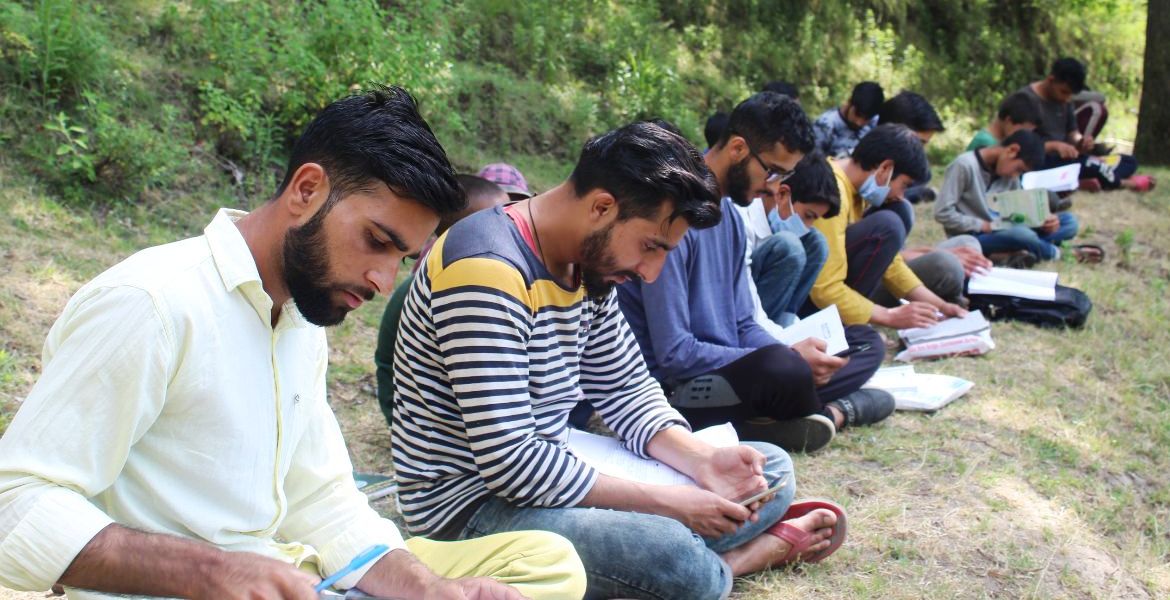
What is interesting about this teaching space is that the big boys help the kids in managing their assignments. Sometimes, they teach them. In certain cases, students having two phones offer one to the poorer ones not owning a smartphone. However, most of the students own better phones though they lack basic connectivity.
“Most of the times we miss our classes due to the unavailability of mobile tower in our area and also because of the distance we have to cover to catch some mobile signal,” Mohammad Maqbool Sheikh, a science student from Lachipora said. “It is very difficult to manage when it is raining outside, (as a result of which) we miss our classes and even the examinations.”
Sheikh said the only way-out became to reach an altitude in the forests so get a better dependable 2G signal. “We join the classes from a peak where we lack any protection against rains, heat and the harmful insects or even we can face a wildlife attack,” he added.
It is a vast belt that is not getting proper signals. This is nothing new as the area was facing the problem earlier too. Residents alleged that they have been continuously chasing the cell phone companies to address the issue but they have failed in managing a solution. The area comprising Jala, Gawas, Dachawar, Rawatpora and Watheeri that face this crisis have almost 1500 connections from AirTel alone. Usually, the residents said they have to move around 2-km distance to talk properly.
What is interesting is that the area is being managed by the Airtel only. No other cell phone operator has a tower in this particular belt. But the signals from this tower are interrupted by a small mountain that separates the belt of the villages and the tower. Residents said this interrupting peak is near the Gujar Nalla.
A member of the local Panchayat wishing not to be named said they had persistently approached and pleaded before higher authorities for the improving the facility but nothing has happened.
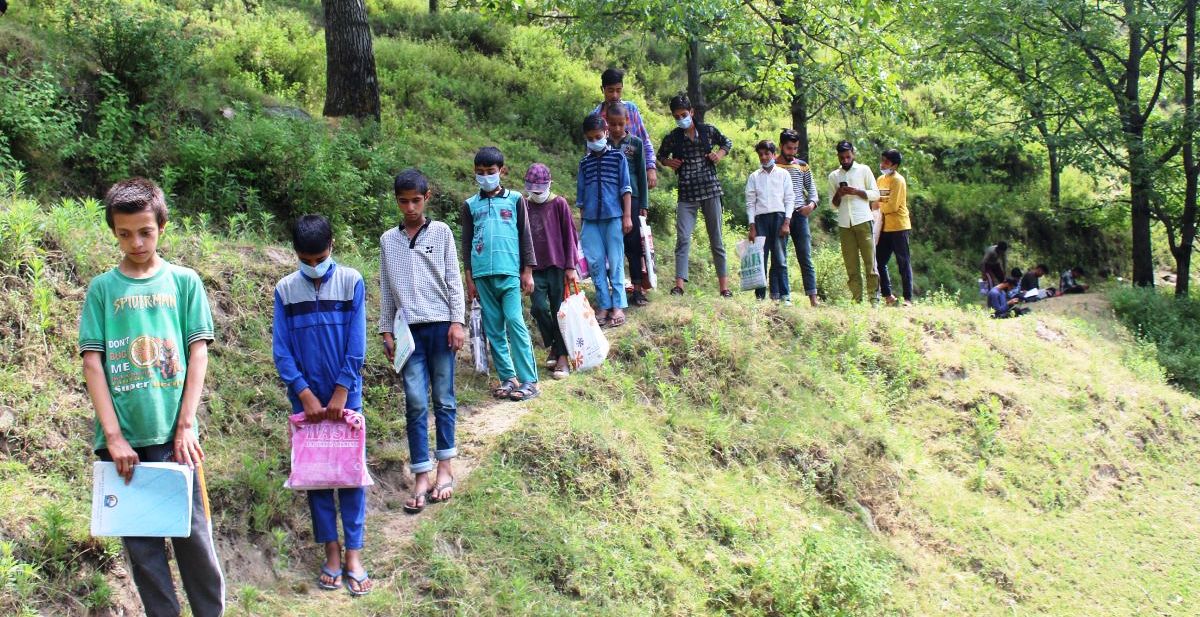
Farooq Ahmad Mir, a PhD scholar from Lachipora said, it is unfortunate the student community is suffering for the basic facility in the modern world. “The world has become a global village but we are struggling to have the basic connectivity,” Mir said. “Barely two km away from where we live, the signals are better.”
“The students here miss their classes while coming from such a huge distance, and it becomes very difficult to keep concentrate on studies while sitting under the open sky and others belonging to different areas remain connected. It adds to the already existing frustration in students,” Sheikh Gowhar, another local student said.
Jammu and Kashmir came under communication blockade in anticipation of August 5, 2019 intervention that devoured the special status of Jammu and Kashmir along with the status of the state that was broken into federally ruled Union Territories. Though a after a few months, the 2G internet was restored, the authorities have rejected the idea of restoring the 4G network. The ban order, being extended from month to month, will stay implemented until September 31. Two districts of Udhampur and Ganderbal, however, do have access to 4G network for the last one month.


